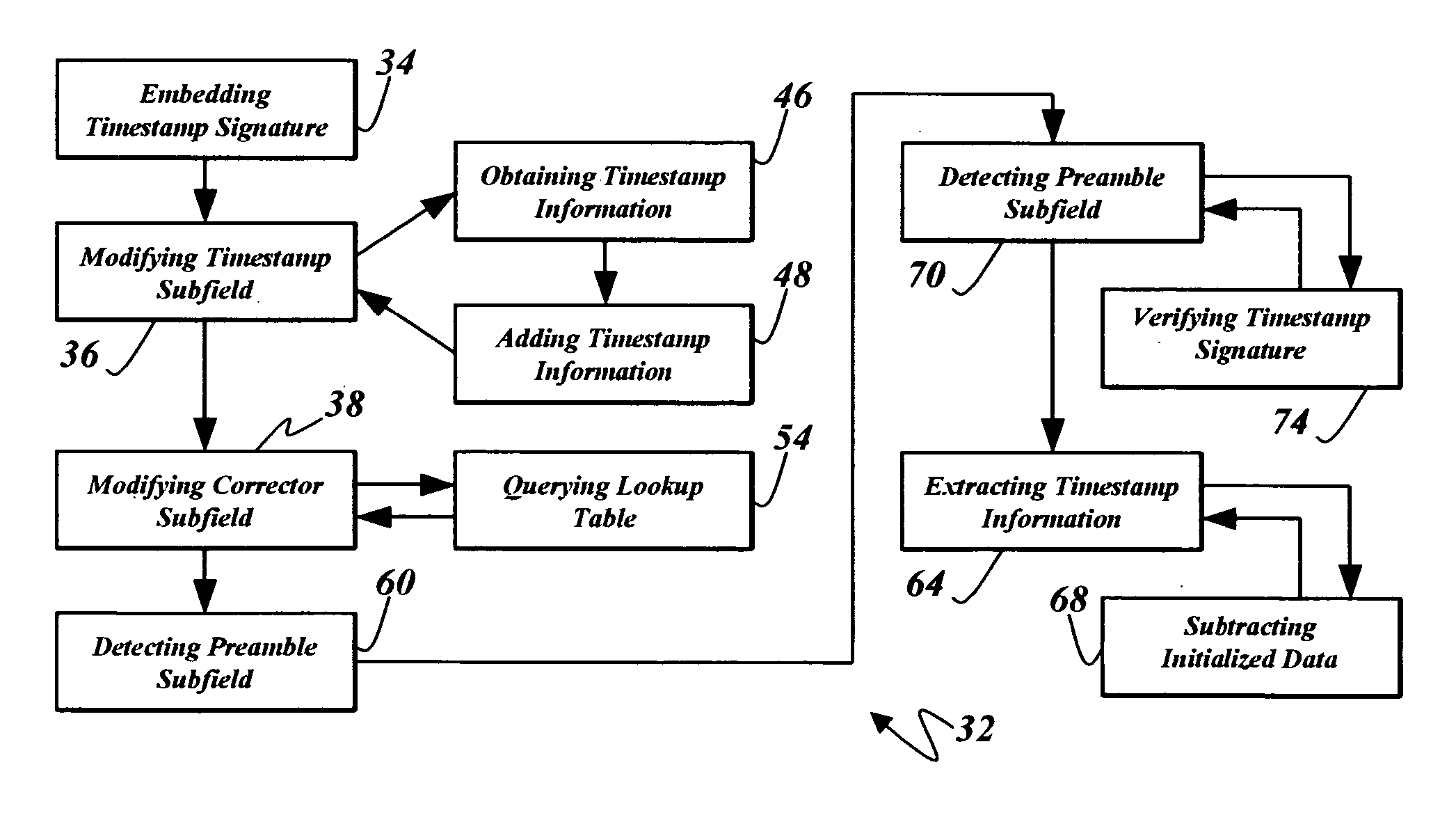However, the functional specifications for the packet in which timestamp information is to be inserted, including the format and content of various fields therein required for compatibility with the networking framework of the network for which latency measurements are being obtained, are generally not amenable to the direct
insertion of timestamp information into the packet upon its imminent transmission into the network.
Since the error detection code cannot be computed until after the data portion has been generated, as well as any other header information, there is an inherent latency within the transmitting device between obtaining the timestamp information and encapsulating the packet at the present protocol layer.
Furthermore, the timestamp information may have been required to be inserted into a data portion of the packet when being processed at a higher protocol layer, prior to the error detection code for the packet being computed at the present protocol layer, thereby resulting in yet greater latency between
insertion of timestamp information into the packet and computation of the error detection code.
Therefore, the inherent latency within the transmitting device is indeterminate since it cannot be accurately determined due to unknown processing times at each of the protocol
layers subsequent to inserting timestamp information into the packet and processor interrupts occurring during such processing.
Accordingly, without any precise correction for the latency between obtaining the timestamp information and the actual time of transmission being possible, the network latency measurement, wherein a test instrument generates and transmits frames using timestamp containing packets as above described, timestamp information retrieved at a receiving test instrument inherently includes this indeterminate term and therefore does not accurately determine the true latency of the network.
However, when testing higher layer protocols, and devices that are sensitive to those protocols, the
insertion of the binary formatted fields is not generally viable.
Insertion of a binary-formatted field within this Layer 7 message portion would corrupt the HTTP messages, resulting in a
high probability that the HTTP message would be dropped by devices under test that are cognizant of the HTTP protocol and need to interpret the HTTP messages during Layer 7 processing upon
receipt.
However, one significant
disadvantage and limitation of each of these four techniques of embedding the
ASCII timestamp during Layer 7 processing is that timestamp information must be inserted by the Layer 7 application in the test instrument, or transmitting device, into the
ASCII message portion of the packet prior to passing the message to the next lower layer in the protocol stack and ultimately to the Layer 2 process that frames the
resultant packet and transmits such frame.
As described generally above, there can be a significant, indeterminate and uncontrolled latency in the protocol stack of the transmitting device from the time the timestamp is inserted during Layer 7 processing and the time the frame actually exits the test instrument.
This test instrument latency, for example on the order of 10 ms, can be significant in terms of the link speed or of total network traversal time, and can thus render the latency measurements that are being attempted as unreliable or even meaningless.
Another significant
disadvantage and limitation of each of these four techniques of embedding the
ASCII timestamp during Layer 7 processing is that timestamp information is obtained prior to calculation of the Layer 4
checksum for the Layer 4 header that encapsulates the packet.
 Login to View More
Login to View More  Login to View More
Login to View More 

